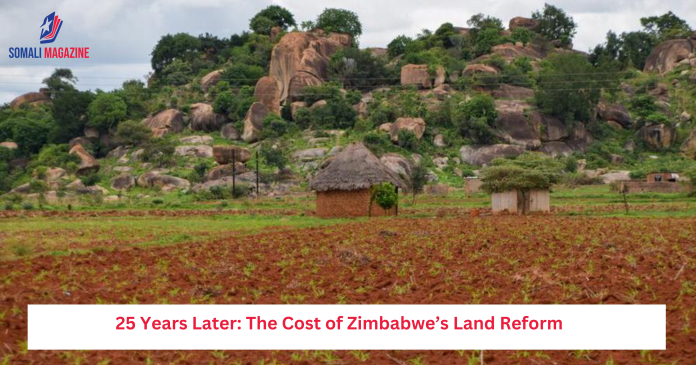Facebook Twitter (X) Instagram Somali Magazine - People's Magazine
A look at how rushed land seizures shattered Zimbabwe’s economy, displaced millions, and left justice still out of reach for many
It’s been 25 years since Zimbabwe’s government took over white-owned farms in a violent and rushed land reform programme that caused massive disruptions to the economy and agriculture. The policy, which aimed to correct colonial-era land ownership imbalances, ended up causing more harm than good, both economically and socially.
The land seizures began in 2000 under President Robert Mugabe after he lost a referendum that would have allowed the government to take land without compensation. Mugabe accused white farmers of supporting the opposition and used this as justification to encourage land invasions. While the idea was to give land to black Zimbabweans, the process turned chaotic and violent. Many farmers and farm workers lost their homes, jobs, and lives. Over 1.5 million black farm workers were also displaced, but their suffering received little attention.
The land grab caused a sharp decline in agricultural production. Once known as the “breadbasket of Africa,” Zimbabwe’s economy collapsed. Food shortages became common, and inflation skyrocketed. By 2008, nearly half the population was malnourished, and the Zimbabwean dollar had become worthless.
In 2019, the Zimbabwean government decided to compensate about 4,000 white farmers for infrastructure and improvements they made on the farms, though not for the land itself. A deal was signed in 2020 promising US$3.5 billion in compensation. However, with limited resources, the government plans to pay this using long-term treasury bonds and small cash payments, some from the national budget. Many farmers are skeptical about whether they’ll ever receive the full amount.
Only about 1,300 farmers have signed up for compensation, with many still holding onto their title deeds, even though it’s clear the land will not be returned. The government is also looking for international support, but trust in Zimbabwe’s financial system is low, and donor support has been limited.
Meanwhile, the land that was taken was handed out under two schemes: A1 plots for smallholder farmers (5–10 hectares) and A2 farms for black commercial farmers (average 125 hectares). However, the distribution was often unfair. Many high-ranking government officials and military elites ended up with multiple farms, while ordinary people got little or nothing. A study showed that 2% of new landowners controlled about one-third of the redistributed land.
Corruption, poor planning, and lack of support for new farmers meant most of the land wasn’t used productively. Many elite landowners tried to farm from their homes in the city, and government-led agricultural programmes were inefficient and plagued by corruption.
Despite this, there have been signs of recovery. The tobacco industry has bounced back, thanks to contract farming. By 2023/24, tobacco production reached 296 million kg, up from 48.7 million kg in 2008. Horticulture is also slowly improving, with exports of fruits and flowers worth around $120 million annually.
Still, many feel that the land reform benefited the ruling elite far more than ordinary Zimbabweans. Women and young people were especially left out—only 12% of land beneficiaries were women, and less than 10% were under 35.
Now, the government is asking new landowners to pay a US$500 per hectare levy, which some fear is meant to fund compensation to white farmers. This has angered war veterans who had taken land during the early invasions.
Sadly, little has been done for the millions of black farm workers who lost everything during the land reform. Their suffering has largely been ignored in this ongoing struggle over land and justice.
In short, Zimbabwe’s land reform left deep scars. While there have been some improvements, especially in tobacco farming, the process remains a cautionary tale. It shows what can go wrong when political goals take priority over planning, fairness, and economic stability.

